Your holiday dinners won’t be complete without a perfect Prime Rib at the center of the table. Prime Rib, aka standing rib roast, is beautifully soft and tender after slow roasting in the oven. This steak shines on its own but you can also serve it with Au Jus or horseradish sauce.
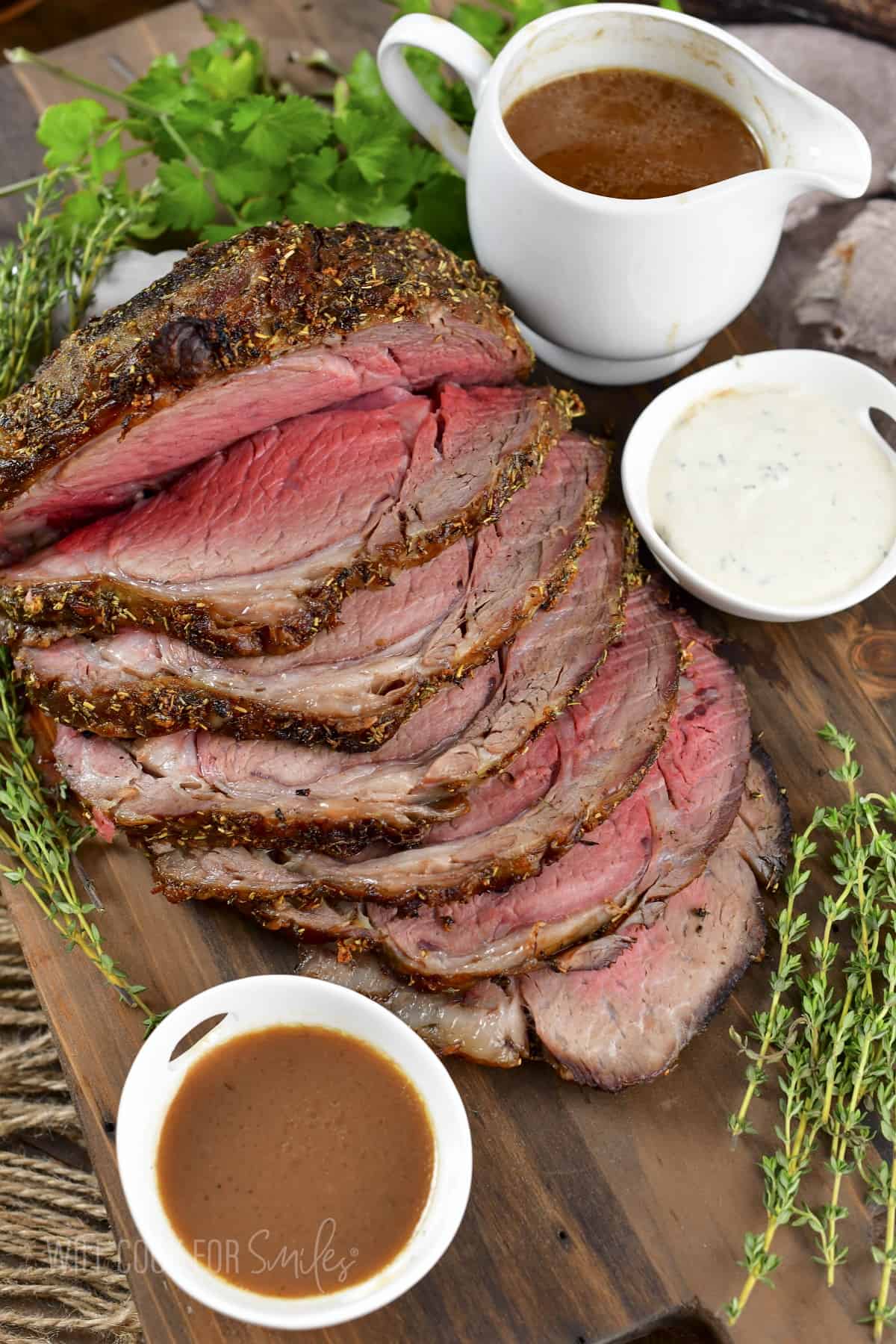
There are many main dish choices for holidays, like roast beef and beef tenderloin but prime rib is a favorite for so many families!
Prime rib is also known as the standing rib roast because it is cooked “standing” on the ribs. Although, many people don’t even cook this meat with a bone on.
Prime Rib Roast is a beautiful holiday main dish because of how good this steak really is. It is incredibly soft, tender, and flavorful. It’s called “prime” rib for a reason, because it comes from a Prime grade beef.
When choosing the meat, always remember that it will taste as good as the the meat you choose. So choose a better quality meat for the best results.
Keep at least half of the fat cap on the steak as well. Remember that fat will contribute a lot of flavor and tenderness to the meat during the cooking process. Choose a cut that has great marbleization throughout.
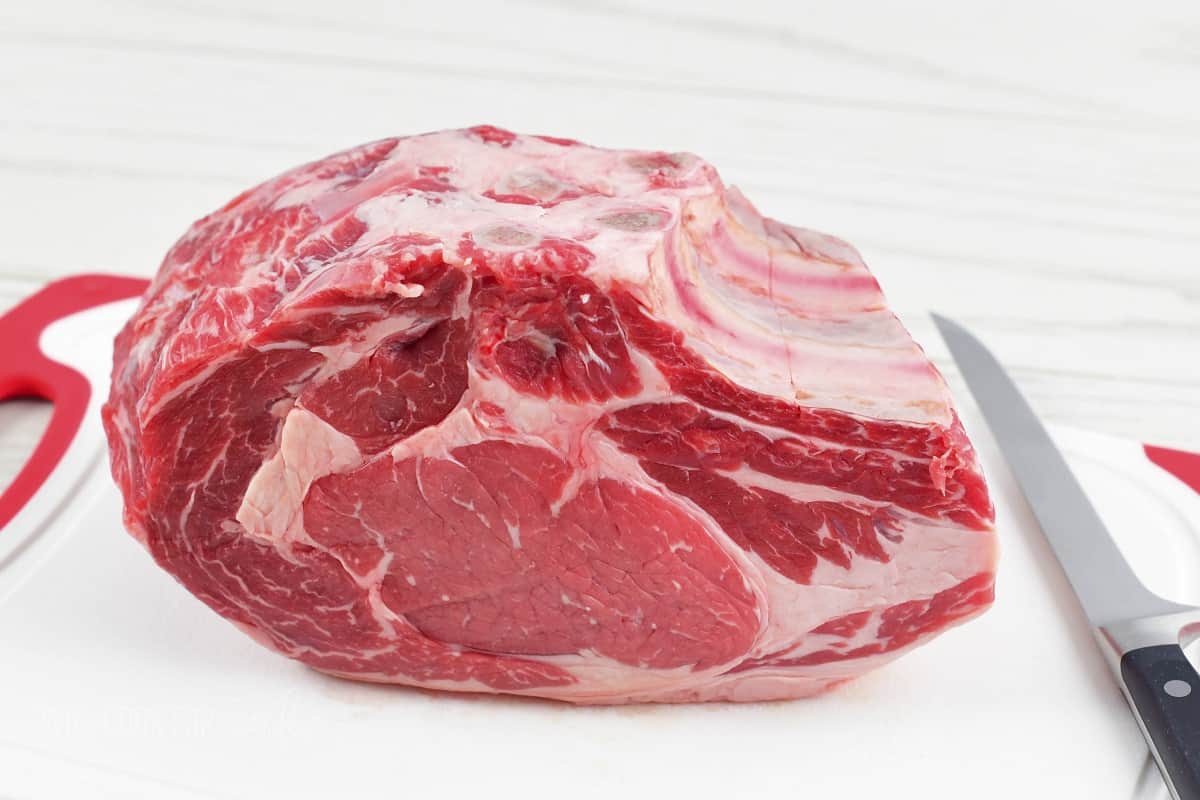
Bone On or Off?
- Personal recommendation (based on many trials) is that you get the prime rib roast without the bone. (If your only option at the store is to have it with the bone, you can ask the butcher to take the bone off and tie the roast for you.)
- There hasn’t been much evidence to support the idea that keeping the prime rib on the bone will help with the flavor and the tenderness. I’ve cooked it with bone and without it, I did not notice a difference in the tenderness or flavor.
- What I do notice, is that without the bone, you will get a beautiful sear and seasoning on the outside on all four sides. Bone has to come off before serving, so all that beautiful sear and seasoning on the bottom comes off with it.
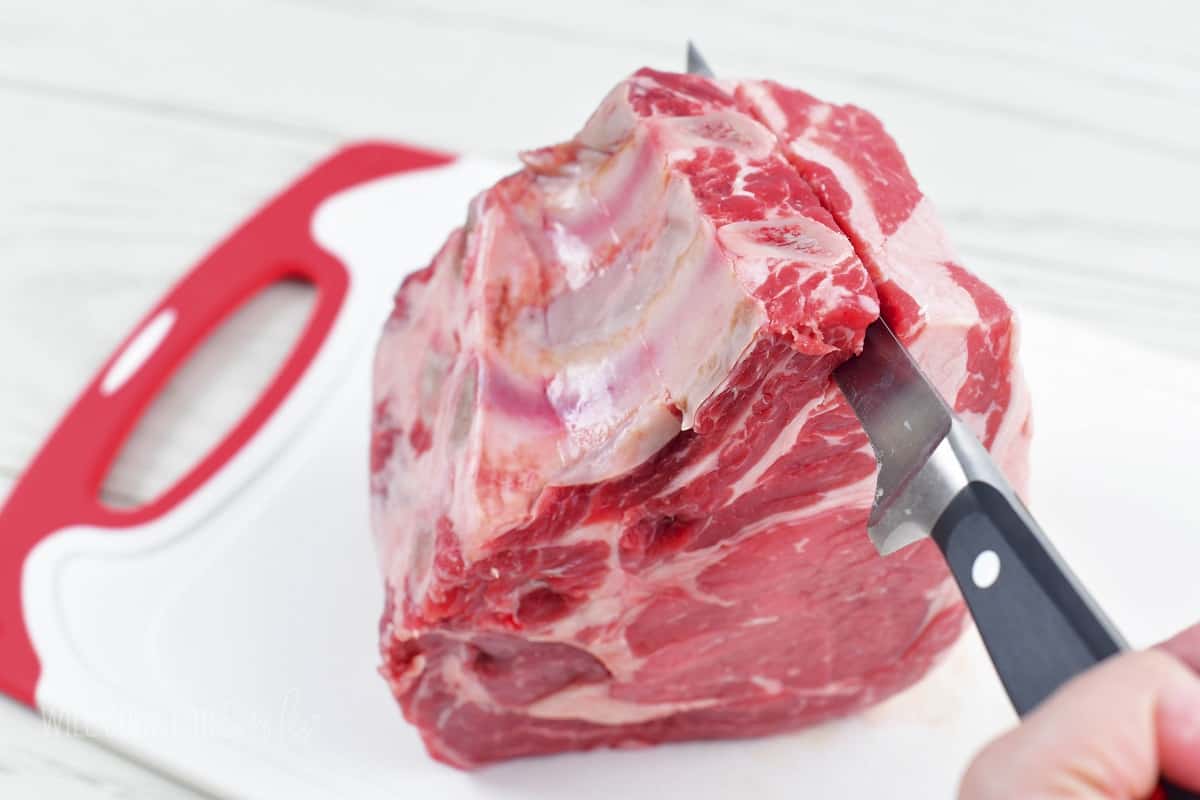
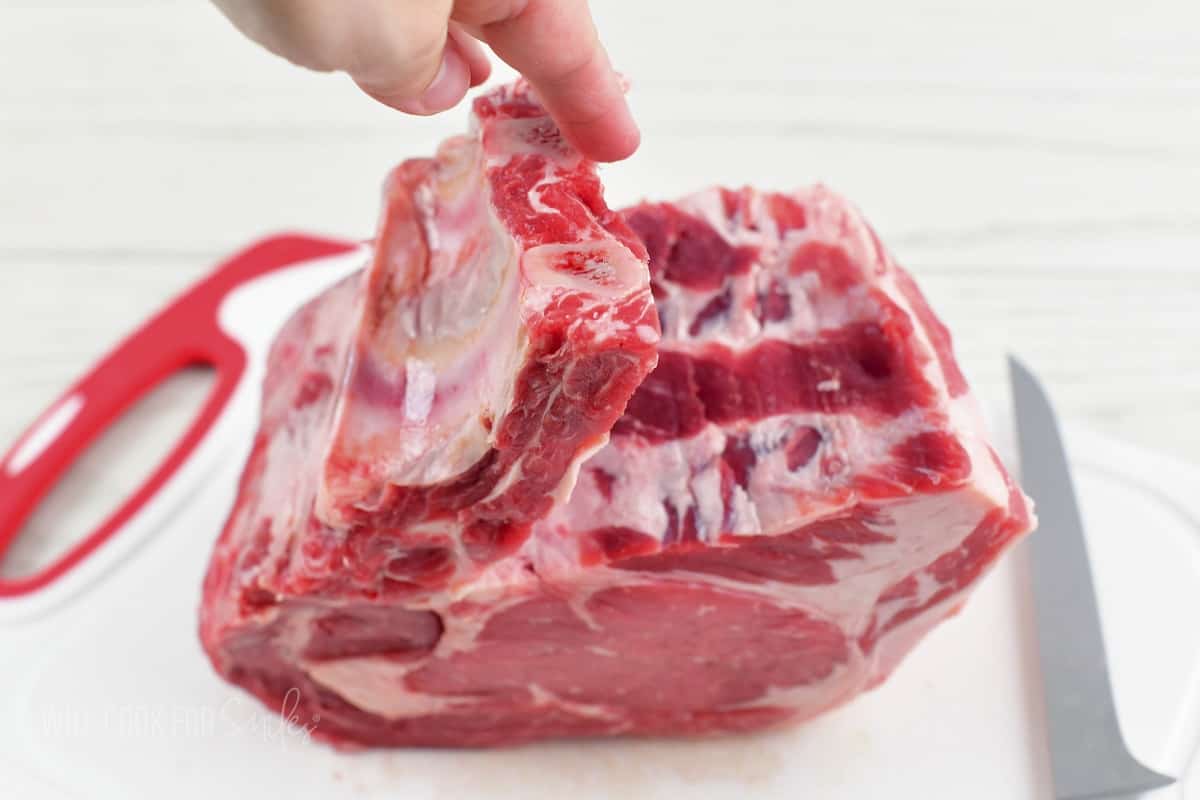
How To Cut The Bone Off Prime Rib
- Stand the prime rib on the cutting board, rib bone up.
- Using a pairing knife, carefully slice along the rib bone to separate the bone from the roast. Try to get as close to the bone as you can and follow the curve of the bone!
- TIP: don’t discard the rib but add it to the bottom of the roasting pan and hopefully it will add some juices to the pan drippings.
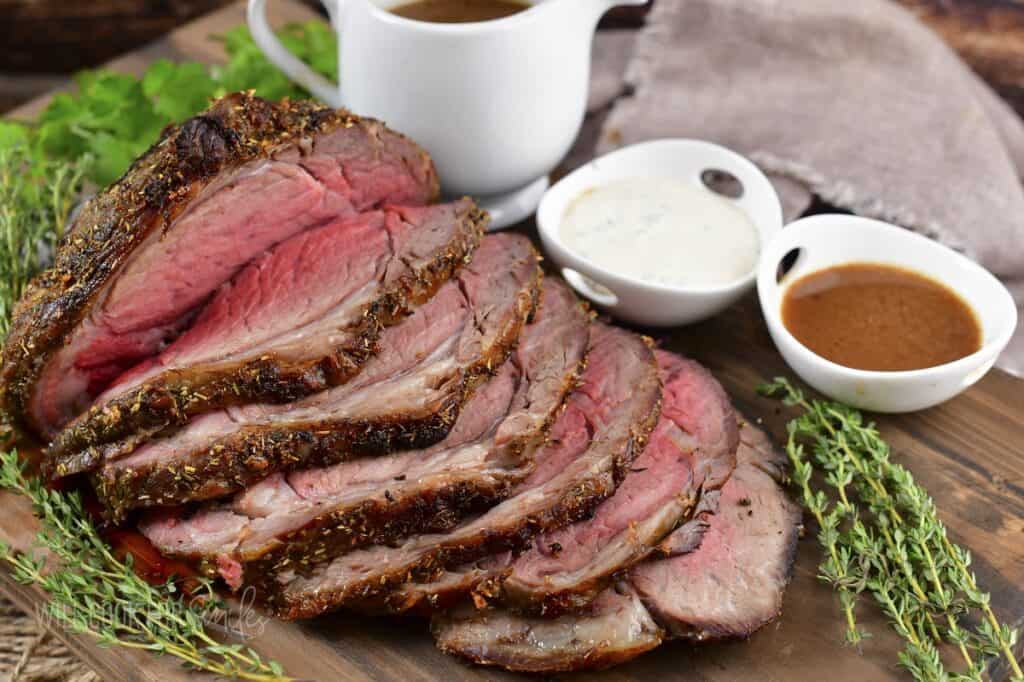
Tips For Preparing the Meat
- The day before cooking prime rib, you will need to salt it generously and let it sit in the refrigerator.
- You can ask the butcher to separate the rib from the meat and tie it back up or you can do it yourself at home.
- If you notice too much fat on the outside, you can cut off about half of it. You don’t want to cut off all of it or the meat will not be as juicy.
- Before salting, you will want to score the fat cap on top by slicing it in a crisscross pattern.
- Generously rub the meat all over with coarse salt. Make sure to get in between the cuts in fat and on the side where the ribs separate from the meat. Place it on the plate, cover tightly with plastic wrap and then aluminum foil, and refrigerate overnight or up to 18 hours.
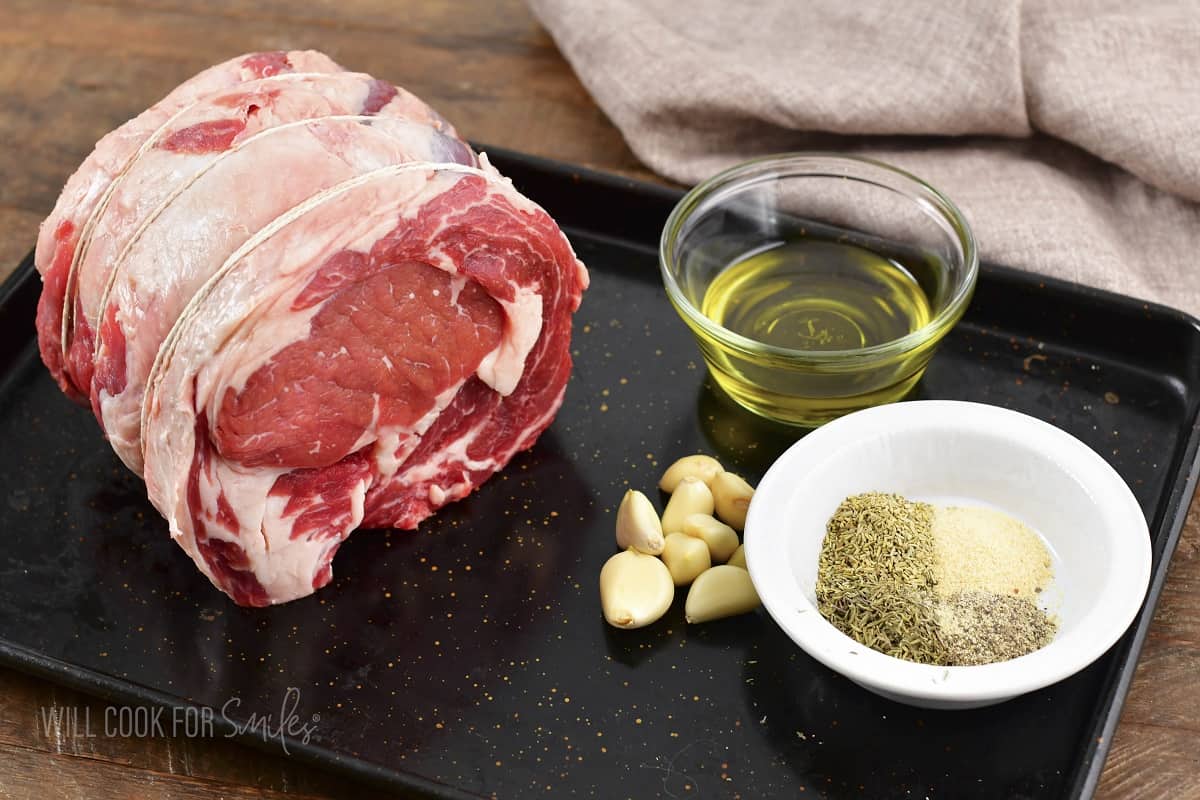
Seasoning for the Prime Rib
For my prime rib roast, I use almost a wet rub. I combine olive oil with fresh garlic, dried rosemary and thyme, salt, pepper, and some garlic powder.
How To Cook The Perfect Prime Rib
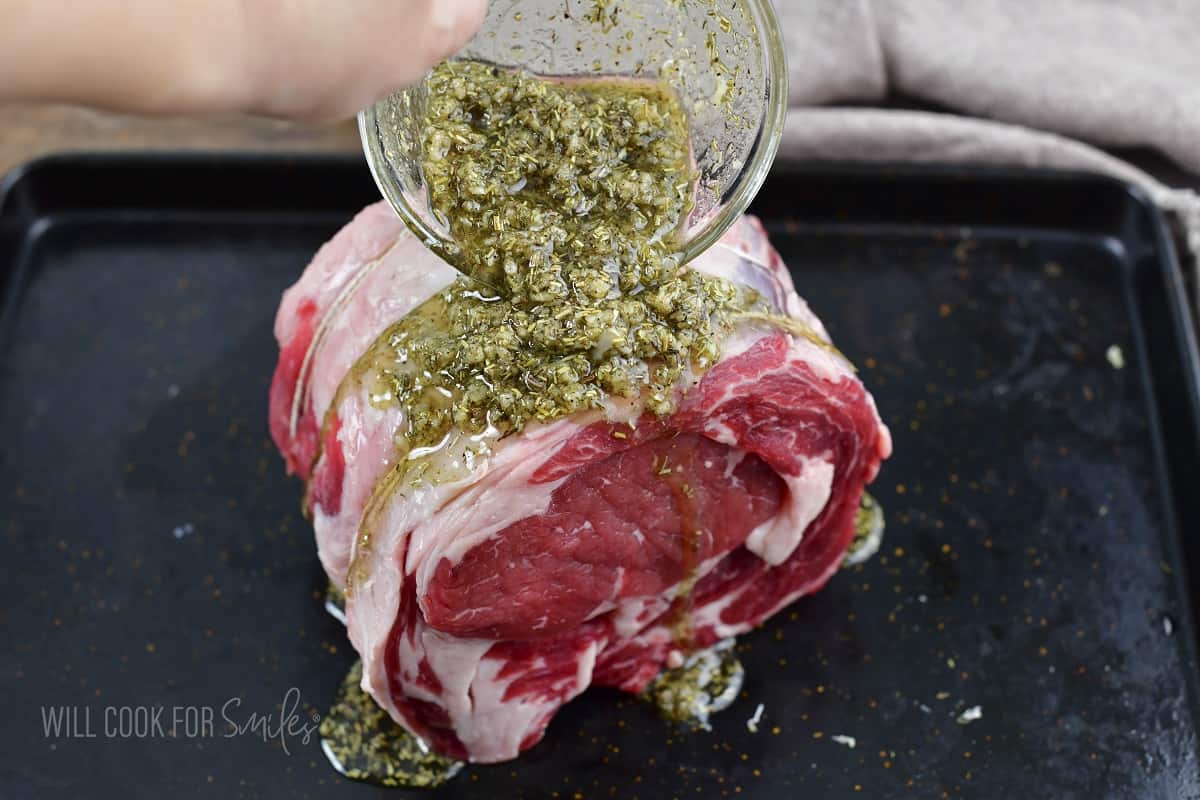
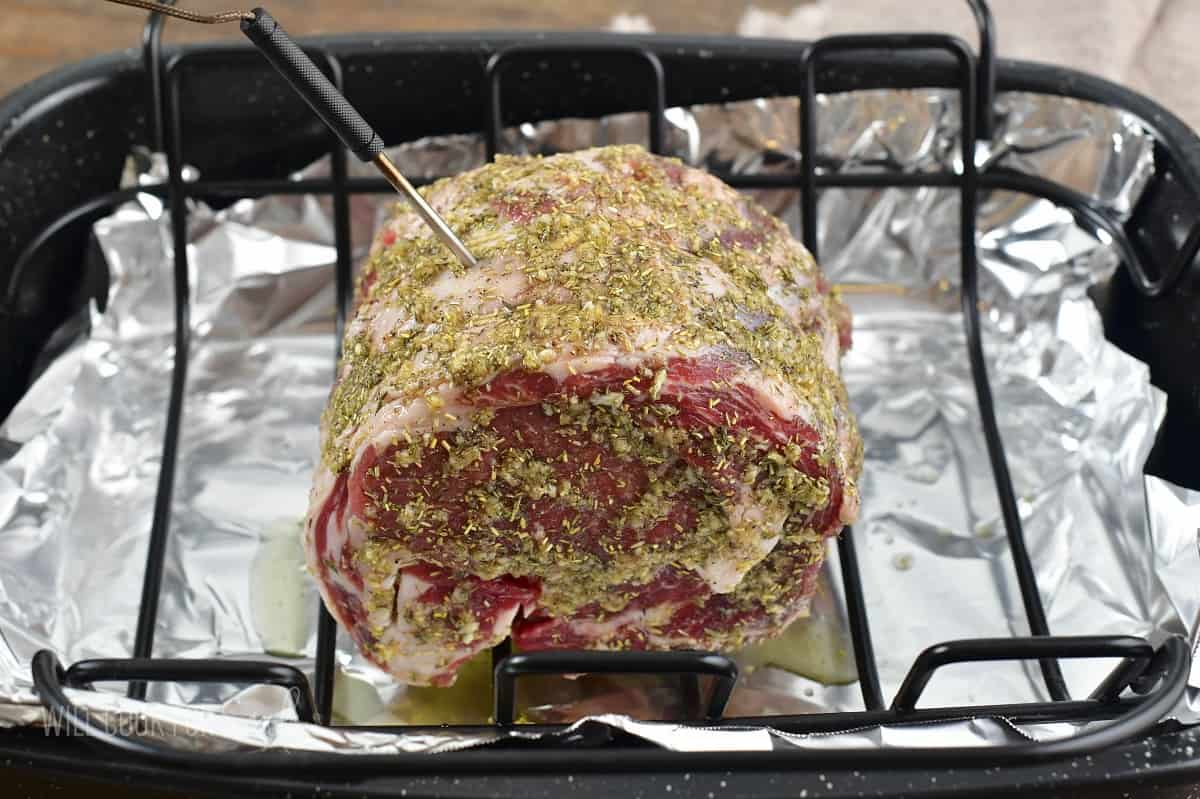
- Make sure to pull the meat out of the refrigerator 2-3 hours before cooking and let it get to room temperature.
- Seasoning: Combine pressed garlic, olive oil, dried herbs, black pepper, and garlic powder in a bowl and mix. (No salt since it’s already salted.)
- Place the salted prime rib into a rimmed baking sheet and pour the wet rub over it. Rub the whole piece of meat with the seasoning mix all over, on all the sides. Try to get it as even as possible.
- Place the seasoned prime rib roast in the prepared roasting pan, onto the inserted wire rack. Make sure to use the leave-in thermometer to track the temperature of the meat! Insert the probe into the middle of the meat to track the temperature of the very center.
- Cooking: Preheat the oven to 500°F. Place the roasting pan into the oven and cook for 15-20 minutes to sear the meat. Lower the temperature to 250°F and cook until the roast reaches your desired temperature.
How To Tell If Prime Rib Is Done?
Leave-in meat thermometer is the best to use to track when your meat is done because you can read the internal temperature of the meat without opening the oven.
If not, take the prime rib out of the oven to measure internal temperature and keep the oven closed. This will prevent temperature drops in the oven.
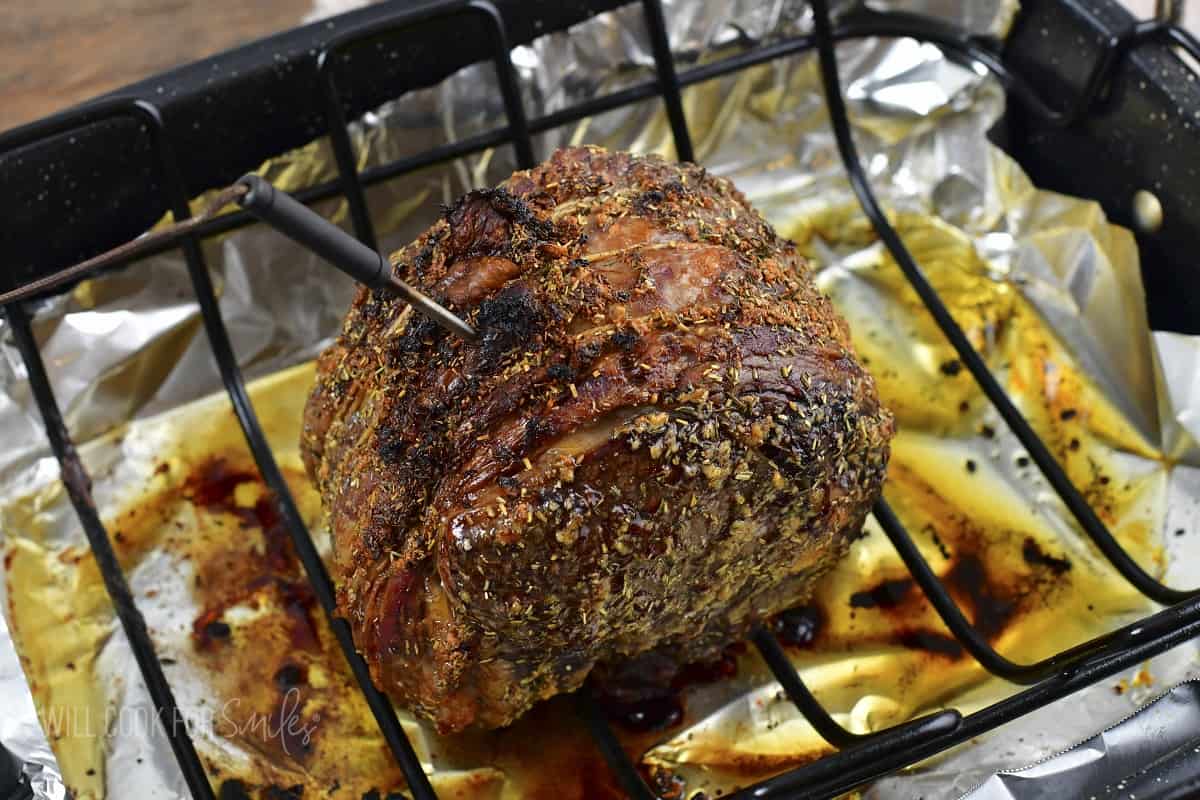
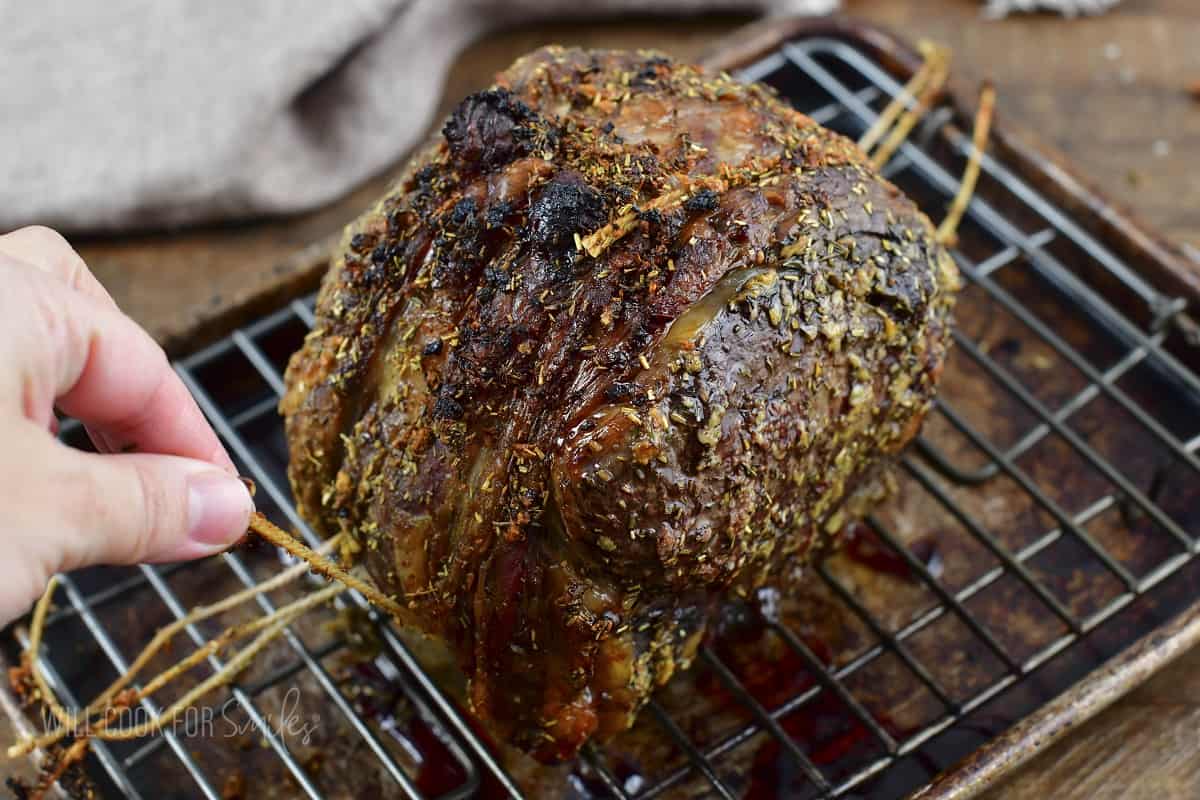
Tips For Cutting
- Once the meat reached the temperature, take it out of the oven but do NOT cut into it yet.
- Place prime rib on the wire rack inside a rimmed pan, take off the cooking twine, and tent it with aluminum foil. Let it rest for about 20 minutes.
- Using a long, sharp knife, slice the prime rib against the grain, into steaks that are about 1/2 an inch thick. (Or cut it thicker or thinned based on personal preference.)
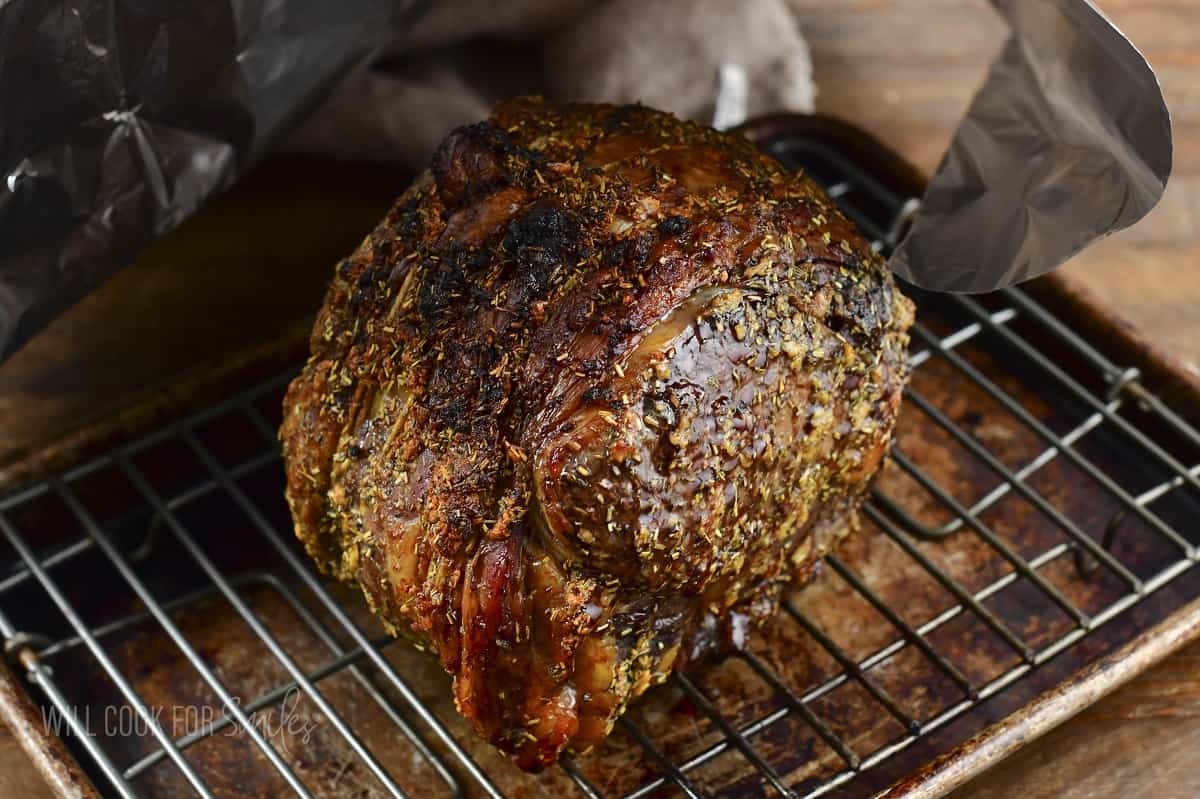
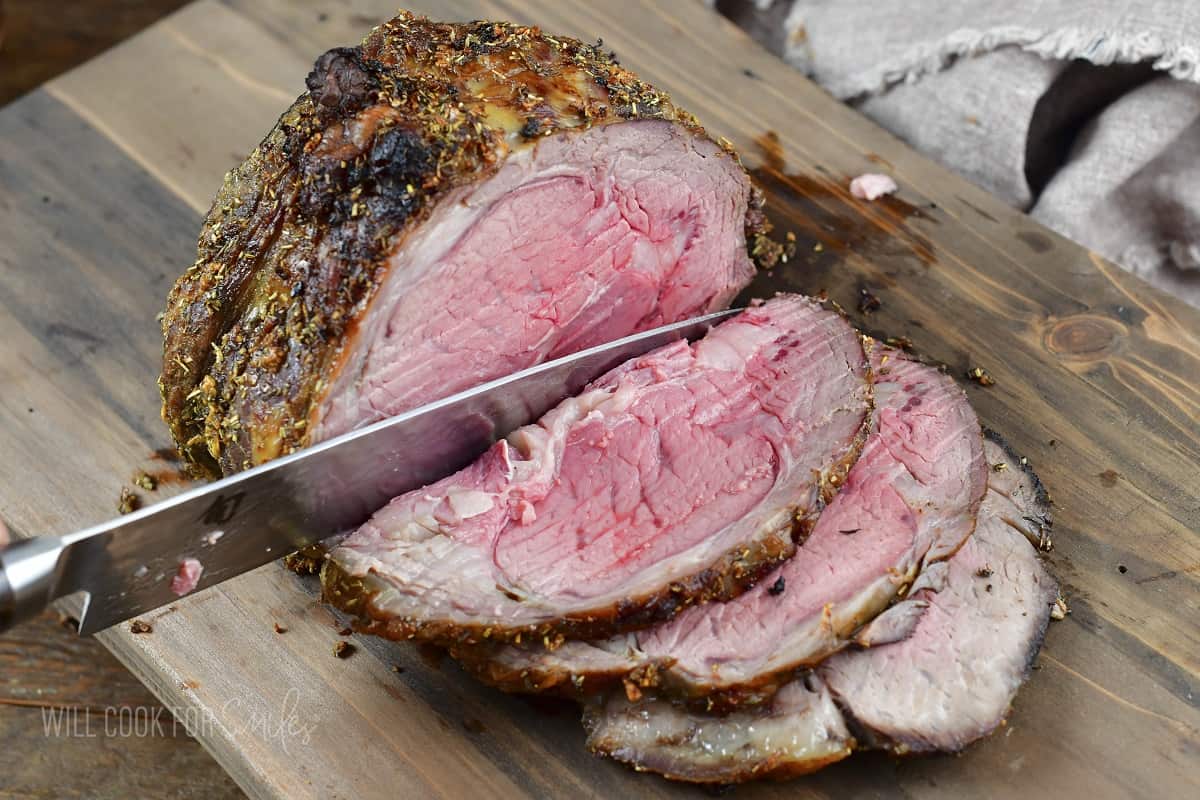
How Much Meat To Estimate Per Person?
When getting prime rib, estimate 3/4 – 1 lb per person, depending on the type of dinner. For a large holiday dinner with many additional sides, 3/4 lb per person will be plenty. For a light family dinner, estimate 1 lb per person.
You can carve thicker or thinner slices of steak as well, depending on the dinner.
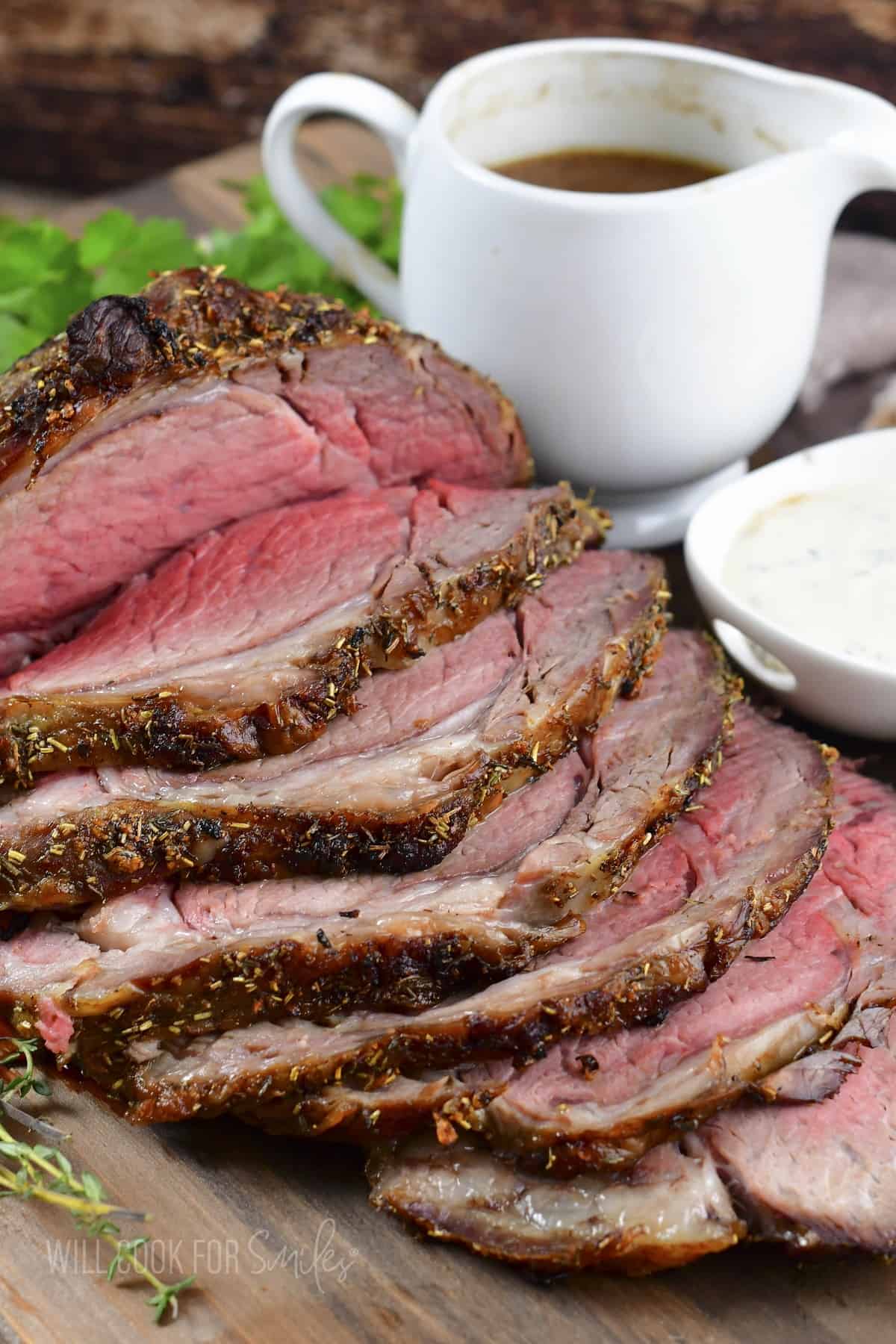
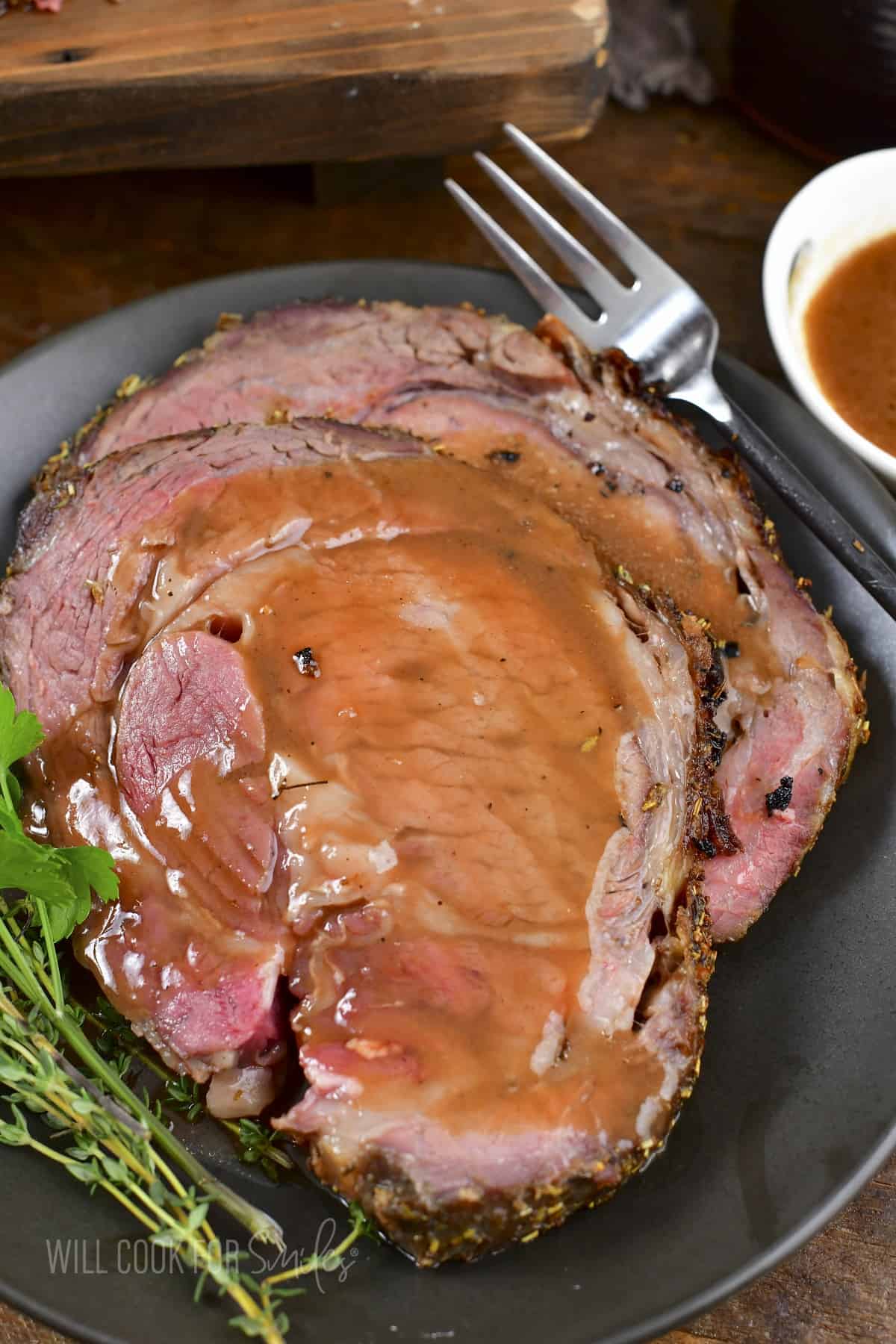
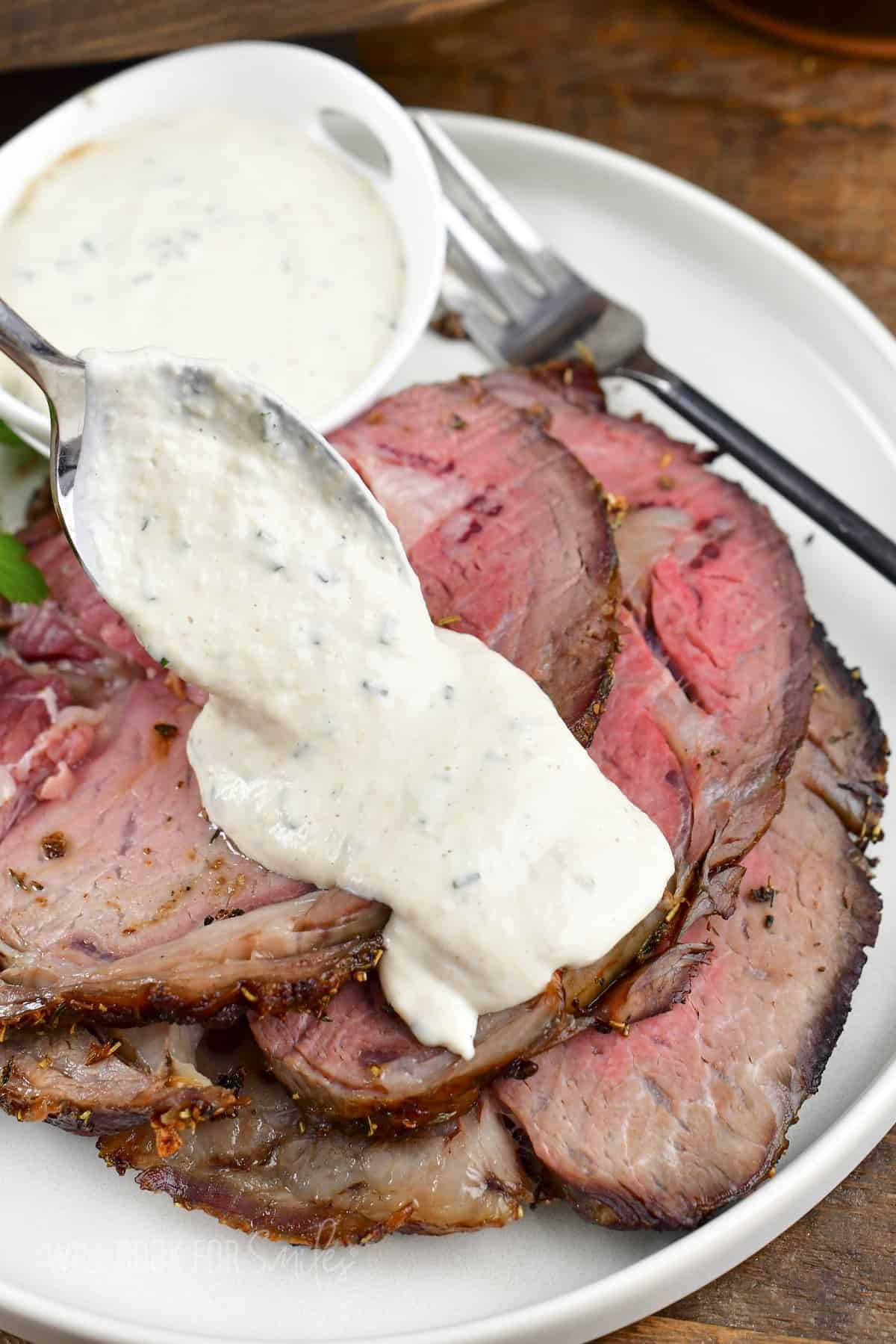
Serving Suggestions
If you’ve made my beef tenderloin recipe and found a lot of good information here, PLEASE leave a 🌟 star rating! Let me know how you liked it by leaving the 📝 comment below as well. Don’t forget to subscribe to my newsletter!
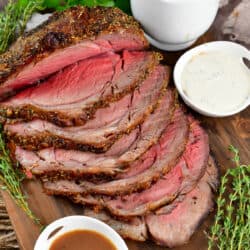
Prime Rib Recipe
Ingredients
Prime Rib:
- 4.5 lbs prime rib roast
- 3-4 tbsp coarse salt depending on the size of the meat
Seasoning:
- 3-4 tbsp olive oil
- 8-10 garlic cloves pressed
- 2 tsp dried crushed rosemary
- 2 tsp dried thyme
- 1 tsp fresh cracked black pepper
- 1 tsp garlic powder
Instructions
Prepare Prime Rib:
- Separate the ribs from the meat. (You can ask the butcher to separate the ribs from the meat and tie the roast or you can do it yourself at home.)
- To Separate The Rib Bone:Stand the prime rib on the cutting board, rib bone up.Using a pairing knife, carefully slice along the rib bone to separate the bone from the roast. Try to get as close to the bone as you can and follow the curve of the bone!TIP: don’t discard the rib but add it to the bottom of the roasting pan and hopefully it will add some juices to the pan drippings.
- If you have a large fat cap, you can cut off about half of it, but not all. Score the leftover fat cap on top by slicing it in a crisscross pattern.
- Generously rub the meat all over with coarse salt. Make sure to get in between the cuts in fat and on the sides.
- Place it on the plate, cover tightly with plastic wrap and aluminum foil. Refrigerate overnight or up to 18 hours.
Cooking Prime Rib:
- Make sure to pull the meat out of the refrigerator 2-3 hours before cooking and let it get to room temperature.
- Preheat oven to 500° and place a wire rack inside a roasting pan. (You can line the bottom of the roasting pan to easier catch the drippings and to make clean up a breeze.)
- Since you already salted the meat the day before, you don’t need to add more salt. So combine pressed garlic, olive oil, dried herbs, black pepper, and garlic powder in a bowl and mix.
- Place the salted prime rib into a rimmed baking sheet and pour the wet rub over it. Rub the whole piece of meat with the seasoning mix all over, on all the sides. Try to get it as even as possible.
- Transfer prime rib into the prepared roasting pan. Make sure to use the leave-in thermometer to track the temperature of the meat! Insert the probe into the middle of the meat to track the temperature of the very center. (If you don't have one, you will need to take the prime rib out of the oven to check the temperature.)
- Place the roasting pan into the oven and cook at 500° for 15-20 minutes. Lower the temperature to 250° and cook until the roast reaches your desired temperature.
- Let it cook until the temperature reaches 120° for medium-rare or 130° to be closer to medium. (Remember that the temperature of the meat keeps going up about 5° while it's resting.)
- My 4.5 lb roast took about 2 hours and 15 minutes to get to the temperature. It’s hard to give an exact time because thickness of roasts does vary and therefore, relying on the time in not the best indicator of doneness. Thermometer is the best way to tell if your meat is done.
- TIP: If you do not have a leave-in thermometer, take the prime rib out of the oven to measure internal temperature and close the oven. This will prevent temperature drops in the oven.
Carving Prime Rib:
- Once the meat reached the temperature, take it out of the oven and place it on the cutting board. Tent it with aluminum foil and let it rest for about 20 minutes.
- Slice the prime rib using a long, sharp knife against the grain, into steaks that are about 1/2 an inch thick. You can carve a little thicker or a little thinner depending on the sides you serve…and how much you love your guests.
Nutrition
Originally published on Will Cook For Smiles in December 2022.

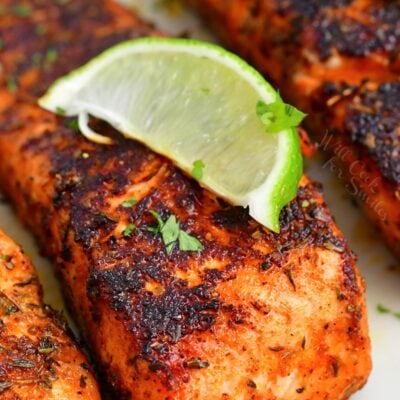
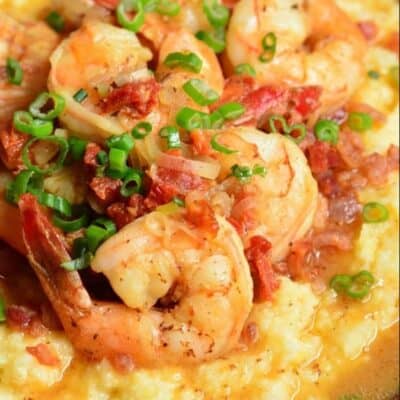


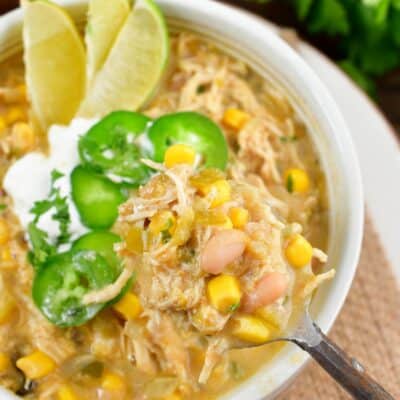

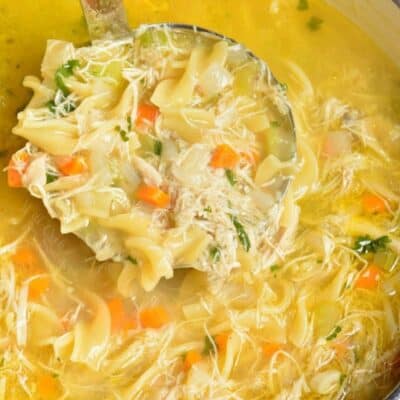
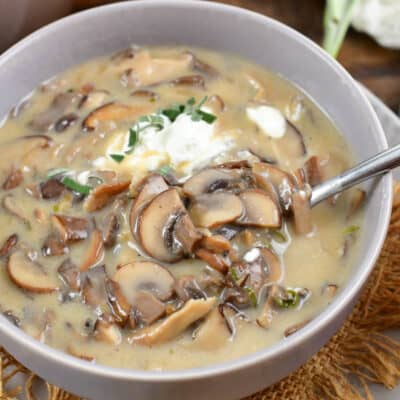
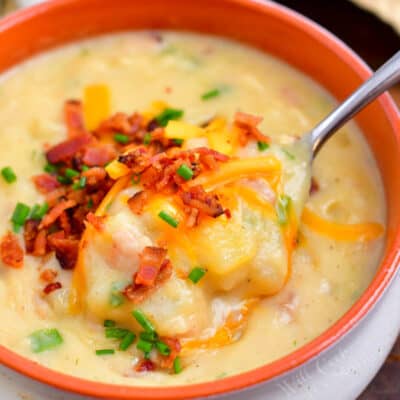
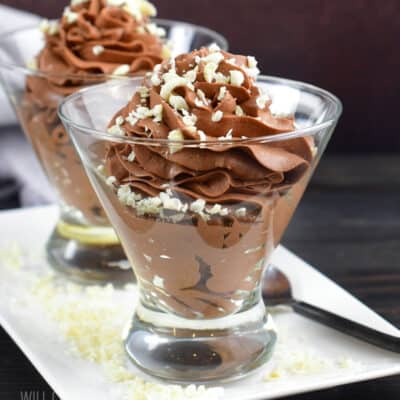
Donna McNeil says
I finally got the nerve up to try this dish! This recipe made it so easy and there was zero guesswork! My entire family (12 of us) absolutely LOVED how it turned out for our Christmas dinner!!!!
LyubaB says
Thank you so much for sharing this, Donna! I’m thrilled to hear that you gave the recipe a try and that it turned out to be such a hit for your Christmas dinner! Cooking for 12 is no small feat, so I’m so glad this recipe made it easy for you. It makes my day to know your entire family enjoyed it. 🙂
Dee says
Can;t wait to try your recipe.I have always made this dish for my family on Christmas. I have always mixed all of my herbs and salt combined and used as a rub two days before I am ready to cook it. I thought that the infusion of herbs into the surface meat helped it to taste better throughout the cooking process. It always comes out very moist and flavorful. But this year, I am going to try your method of adding the salt first and then the herbs on the actual cooking day. I will be interested in seeing how the flavor changes. I also serve my roast with yorkshire pudding. Happy holidays to you and yours!
LyubaB says
I hope it turned out to your liking! 🙂